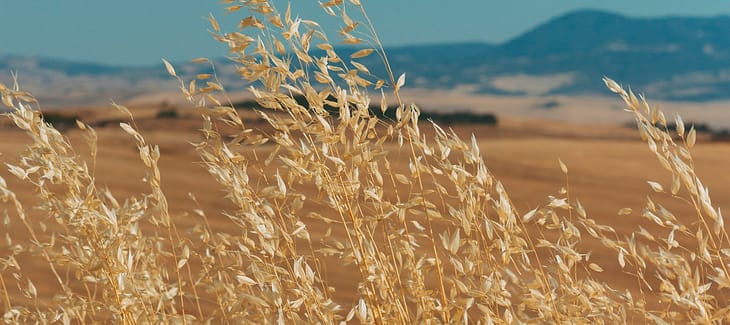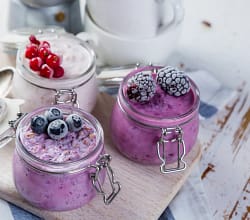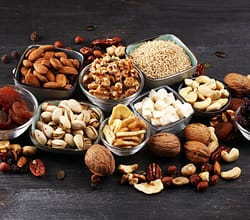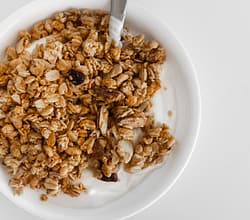Oats, wheat and barley are some of the most popular grains in the world. It can be confusing which one to add in your diet. This is rightfully so, because each of the three have unique qualities that separate them from each other. In this article, I will analyze these grains more in depth, and allow you to choose the one that best suits your diet and lifestyle. This is strictly a comparison of oats vs barley vs wheat, and no grain is completely superior to another.
Oats

One of the most reliable breakfast options for a high percentage of the population are oats. It contains essential fibers, proteins, vitamins, and minerals. In terms of fibers, it contains both soluble and insoluble fibers. In terms of proteins, oats contain 8 essential amino acids. If it contained a sufficient amount of lysine, it would qualify as a complete protein source.
All oat varieties contain plenty of vitamins and minerals necessary for a balanced diet. Such examples include copper, iron, zinc, manganese, phosphorus, potassium, selenium, magnesium, and B vitamins.
If you are gluten-sensitive, oats are universally considered safe to eat, as long as they are not cross-contaminated by wheat sources. They serve as great additions to gluten-free diets, offering a good amount of mineral and fiber intake. However, if you suffer from this condition, you should only eat oats that are certified gluten-free, just to be safe.
There are several different types of oats as well and they all can be used in different ways, from overnight oats to oat smoothies and even as a base for baking. They are plentiful, easy to harvest, and provide valuable nutrition in moderation.
Oats are surprisingly creative and versatile and you can make a lot of tasty breakfast meals with them.
Macronutrient facts (oatmeal used as example):
Serving size: 1 cooked cup of oatmeal (234g)
Calories: 158
Total fat: 3.2g
Total carbohydrate: 27g
Dietary fiber: 4g
Sugars: 1.1g
Protein: 6g
Wheat

Wheat is a grass that has been a staple in the human diet for thousands of years. Everything bread-related you can think of comes from a base of wheat. A few of the many foods you can create from wheat include bread, pasta, crackers, cakes, and biscuits.
Wheat is popular amongst many as the most budget-friendly food option in the world. It is cheap, common, reliable, shelf-stable, easy to make, and provides a good amount of simple carbohydrates. For this reason, wheat may be one of the best foods to provide a large number of people with baseline nutrition and survival.
Does this mean wheat is a healthy option? Sadly not. Recently, people have begun to establish a clear link between wheat and health issues such as irritable bowel syndrome and gluten intolerance. Not only do those with celiac disease need to stay away from it, but wheat is also beginning to take the blame for other health problems. These include obesity, heart disease, and other digestive issues. Wheat has also been consistently proven to raise blood sugar levels, cause allergic reactions, and block absorption of certain essential vitamins and minerals.
White, refined bread found in most stores is made from wheat, and many studies like this one from India.com have linked eating this bread with the aforementioned health problems
Why you should be eating whole wheat over refined wheat
One of the main reasons wheat is becoming bad for us is due to crossbreeding. Since the 1950’s, farmers began crossbreeding wheat plants to make them durable, shorter, and faster growing. This introduces compounds and elements that are not too favorable to humans. For example, hybridized wheat contains a toxin known as sodium azide, which can cause headaches and worse digestive issues.
However, wheat isn’t all bad, and you can get value from eating wheat if you are smart about it. I highly recommend eating whole wheat over any other wheat variant. Comparatively, whole wheat contains many of the same vitamins and minerals as oats, but additionally contains antioxidants and plant-compounds which are great at preventing diseases. Whole wheat is also much healthier for your gut than traditional wheat. It can prevent obesity and type-2 diabetes, and aids in digestion.
Overall, generic and refined wheat is an ineffective and cheap food option for many people in the world, but whole wheat can easily be included in your diet as an effective complex carbohydrate source. As long as you are not gluten-sensitive and you eat it in moderation, whole wheat is a healthy food option for you.
Macronutrient facts (whole wheat pasta):
Serving size: 1 cooked cup
Calories: 174
Total fat: 0.8g
Total carbohydrate: 37g
Dietary fiber: 6g
Protein: 7.5g
Barley

Barley is a fibrous grass type that is popular in India and distributed throughout the world. It can be eaten in cereals, ground into a nutritious flour, or eaten as pearled barley. It is often comparable to white and brown rice as a carbohydrate source. Unfortunately, there are no sources of gluten-free barley.
Barley’s strongest attributes are its fiber content and blood sugar control. Because barley is not milled, it holds more fiber and loses less nutrients than wheat. While it is similar in structure to wheat, barley has more iron, vitamins, and beta-glucans than wheat. Specifically, its high iron content helps increase the number of red blood cells in your body, combating infection and supporting the natural flow of blood in the body. For this reason, barley is considered a great food to eat if you want to combat colon cancer and heart disease.
Medical research suggests that eating a cup of barley (in any form) along with plenty of water in the morning considerably speeds up weight and fat loss. Along with its above-average protein content and abundance of B vitamins, it is a great food to build some muscle as well. It should not be overeaten, however, as its rather high calorie count and gluten content may cause issues in excess.
Macronutrient facts (pearled barley)
Serving size: 100g
Calories: 352
Total fat: <1g
Total carbohydrate: 78g
Dietary fiber: 16g
Protein: 10g
The bottom line?
In terms of oats vs barley vs wheat, all three grain options can be an essential part of a balanced diet. They are all surprisingly different in their own ways, but they consistently excel at keeping you satisfied due to their high fiber content.
Rolled oats have the highest protein count and can be made into oatmeal, which is a powerful superfood breakfast. It contains plenty of vitamins and minerals and is your safest option if you are gluten-sensitive.
Refined wheat has historically been terrible for your body, but whole wheat is a great carbohydrate source. It contains antioxidants and plant compounds, which consistently prove to prevent diseases like diabetes and obesity. Also, some brands of whole wheat pasta include extra plant protein to assist in repairing and strengthening your muscles.
Barley may sometimes be expensive, but it is a strong, reliable grain to consume. It contains plenty of iron and B vitamins that keep your cardiovascular system strong and healthy. Most barley types, like hulled barley, naturally contain a lot of protein in particular. It is decently versatile and popular around most of the world as a trusted wheat alternative.






